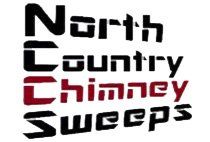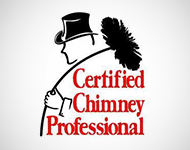FAQS
MAILING ADDRESS
5376 BONANZA CT. HELENA, MT 59602
Phone:
Text:
(406) 439-2170
northcountrysweep@gmail.com
NOTE: Text option best for checking availability.
Scheduling is best done by phone or email.
Property Management Rates are available upon request.
FREQUENTLY ASKED QUESTIONS
Q. SHOULD I HAVE MY CHIMNEY INSPECTED BY A PRO EVEN IF I DON’T USE IT?
A. Yes. Reason being that environmental factors, such as weather and unknown earth shifts can affect the overall stability and usability of your chimney. Especially with regard to a masonry chimney. For what it’s worth the National Fire Protection Agency suggests that all types of chimneys (including those connected to pellet stoves and those that vent gas) are inspected annually whether used or not.
Q. ARE SOFT WOODS LIKE PINE THE REASON WHY MY CHIMNEY GETS DIRTY SO FAST?
A. No. This has much more to do with how you treat your wood and what is your method of burning. Studies conducted by the University of Georgia found that the amount of damage wood left on the chimney was a result of low-temperature fires
rather than a resin rich fuel source. Pine may have more sap on it than other varieties of wood, but recent research has proven that this is not the cause for excess creosote buildup in chimneys. Instead, it seems that the problem of creosote buildup is caused by how ready the wood is to burn instead. Before wood is ready to burn, it must be dry and seasoned. This process can take up to a year to do properly. Making sure you use dry wood to burn fires is more important than whether you choose hard or soft wood varieties. Although it may be slightly more labor intensive to burn many short-lived hot fires, it is safer in general and typically keeps that soot from turning into creosote. If you feel that you must burn slow long-lived fires, just be aware that cleanings should be more frequent and you are putting yourself and your home at a higher risk for a chimney fire. These kinds of fires also tend to cause a quicker build up on your cap or spark arrester, thereby rapidly restricting the flow of smoke.
Q. DO DRYER VENTS REALLY NEED TO BE CLEANED?
A. Yes. According to the US Fire Administration, between 2002 and 2004, Clothes Dryers accounted for about 15,600 reported structure fires, 15 deaths and 400 injuries annually. “Failure to clean” is the leading factor contributing to clothes dryer fires in residential buildings. In my experience, especially with regard to any dryer vent
that is over 4 feet long, lint does build up to a point which constitutes a potential fire hazard and also constricts air flow thereby wasting electricity (clothes taking too long to dry) and also extra wear and tear upon your dryer by it having to overcome the effects of air constriction which usually means you have to run the machine longer.
Q. IS HAVING YOUR CHIMNEY/FLUE CLEANED REGULARLY A GUARANTEE AGAINST A CHIMNEY FIRE?
A. No. The only guarantee would be to forego fuel burning period. Fire, after all, is fire. However, studies have shown that a proper cleaning is proven to greatly increase the likelihood of fire staying inside of your woodstove etc. (where it belongs) and will drastically decrease the intensity of a chimney fire should one occur. Even the best equipment used by the best trained sweep cannot remove every last bit of unwanted fuel (soot etc.) from the lining of your chimney.
Q. WHY BOTHER GETTING A CHIMNEY CLEANING? I’VE NEVER HAD MY CHIMNEY INSPECTED OR CLEANED AND HERE I STAND TO TELL THE TALE.
A. Better safe than sorry. Many folks (90% according to studies) never even know they’ve had a chimney fire. If they do it’s because their timing for being outside at the time of the fire was excellent or most likely a passerby alerted them.
Q. WHY SHOULD I HAVE MY CHIMNEY GIVEN THE “GREEN LIGHT” BY A CERTIFIED INSPECTOR?
A. Even though, many of us live to tell “the tale”, codes for chimney construction and usage have been developed (like most practical codes) through a process of trial and painful error. I am fairly certain that before electrical codes were instituted, a great many people had no problems with the oil infused cloth lining on their homes electrical wiring… until they did.
Q. ISN’T A GUNNY SACK FULL OF CHAINS RATTLED UP AND DOWN MY CHIMNEY OR THAT BRUSH I GOT AT THE HARDWARE STORE GOOD ENOUGH?
A. Perhaps…
A proper sweeping will remove the soot/creosote almost completely from the inner walls of your chimney, to where you see along the entire length, way more metal or fire clay (such as the case may be) than when you started. Also If a wood stove or pellet stove the connector pipe (bridging the gap between your stove and the masonry chimney)must be removed and cleaned in the same manner. Then removing everything that came of this cleaning. In the case of a traditional fireplace, this debris will fall on the smokeshelf (above damper) and be a hazard if not removed along with the fly-ash from fires, which can get so dense as to keep your damper from opening properly. In the case of a woodstove, fly ash or creosote/soot resulting from a cleaning must be thoroughly removed from inside the top of your stove or from the baffle. If fly ash is left here it will choke off the airflow to your stove making it burn less efficiently and if creosote left in this area it will catch fire eventually. If you have a stove with a catalytic combustor, it is imperative that this all be inspected and cleaned properly. Any soot on the walls of this section of your stove should also be brushed and removed. In the case of a woodburning insert that is not directly attached to a flue liner, you have removed this insert from the original fireplace opening and performed ALL of the above actions before putting the insert back in place.
If you can say you have done all of this, then I can’t do much for you other than tell you if your system is up to code. You of course could with proper study also determine such for yourself.
There’s a lot of things that I am not certified to do but prefer to do myself. However, I swallow my pride and get educated by those who are experienced first. As for me, such tasks are rarely the kind whose outcomes are a matter of life and death.
Content, including images, displayed on this website is protected by copyright laws. Downloading, republication, retransmission or reproduction of content on this website is strictly prohibited. Terms of Use
| Privacy Policy


